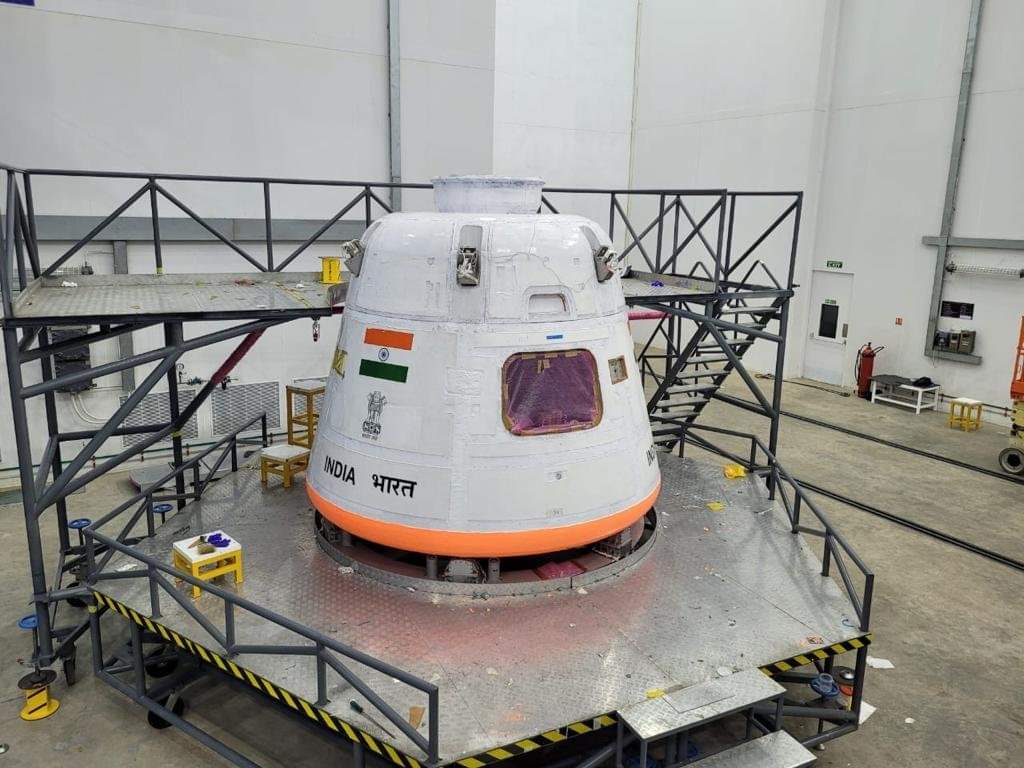New Delhi, October 7: After Chandrayaan, Aditya L. One, now preparations are in the final stages to send the Gaganyaan mission into space.
The Indian Space Research Organisation (ISRO) shared information and pictures on social media on Saturday regarding the Gaganyaan spacecraft and said that ISRO will begin unmanned flight testing for the Gaganyaan mission.
As per the ISRO, preparations for the Flight Test Vehicle Abort Mission-1 (TV-D1) are underway, including demonstrations of the crew escape system. The Crew Escape System, i.e., a system for evacuating astronauts from the developed spacecraft, will be tested soon.
Four important tests are to be conducted under the Gaganyaan mission. which the test vehicle TV-D1 will be tested this month. After this, the second test vehicle, TV-D2, and the first unmanned Gaganyaan (LVM3-G1) will be tested.
Thereafter, it is planned to send test vehicle missions (TV-D3 and D4) and LVM3-G2 with robotic payloads. The final step is to launch the manned test vehicle.
Regarding the mission, Vikram Sarabhai Space Centre (VVSSC) Director S. Unnikrishnan Nair said on Thursday that all the vehicle systems associated with it have reached Sriharikota for launch. Under its first phase, unmanned testing can be done by the end of October.
What is the Gaganyaan Mission?
ISRO’s Gaganyaan mission is India’s first and the world’s fourth manned space mission. Its rocket has been made by making some changes to the GSLV Mark III, which has been named HLVM-III. A capsule carrying humans and an emergency ejection system have been added to it.
The Gaganyaan mission also has a spacecraft weighing 3,735 kg, which will help the astronauts travel in space. It is also called an orbiter module. The Gaganyaan mission will be launched from the Satish Dhawan Space Centre in Sriharikota. Then it will revolve around the Earth for about 3 days. After this, its capsule (crew module) will be lowered into the sea through a parachute.
With the success of the Gaganyaan mission, India will become the fourth country to send humans into space after the erstwhile USSR, the US, and China. Many other countries, including Denmark, are also working in this direction.





